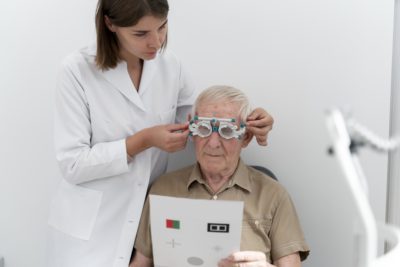Juvenile Idiopathic Arthritis (JIA) is a group of chronic autoimmune diseases that affect children and adolescents. Formerly known as Juvenile Rheumatoid Arthritis, JIA encompasses a range of conditions characterised by joint inflammation, pain, and stiffness. While it can be challenging to diagnose and manage, understanding the symptoms, causes, risk factors, and treatments for JIA is essential for parents, caregivers, and healthcare professionals.
Symptoms of Juvenile Idiopathic Arthritis
Joint Pain and Stiffness:
-
The most common symptom of JIA is joint pain, which can be persistent or intermittent.
-
Affected joints may become stiff, especially in the morning or after periods of inactivity.
Swelling and Warmth:
-
As the disease progresses, children with JIA may experience a limited range of motion in their affected joints.
-
This can make daily activities, such as dressing and playing, difficult.
Fever and Fatigue:
Some children with JIA may develop a low-grade fever, which can come and go. Persistent fatigue and overall malaise are also common symptoms.
Eye Inflammation:
In some cases, JIA can lead to eye inflammation, known as uveitis.
Symptoms may include eye pain, redness, light sensitivity, and blurred vision.
Causes of Juvenile Idiopathic Arthritis
The exact cause of JIA remains unknown, but it is believed to be related to a combination of genetic and environmental factors. Some factors that may contribute to the development of JIA include:
Genetics:
Children with a family history of autoimmune diseases, such as rheumatoid arthritis, are at a higher risk of developing JIA.
Immune System Dysfunction:
JIA is an autoimmune disorder, which means the immune system mistakenly attacks healthy tissues, including the synovium (the lining of the joints).
Environmental Triggers:
Infections and environmental factors may trigger JIA in genetically susceptible individuals.
Risk Factors for Juvenile Idiopathic Arthritis
While JIA can affect any child, certain risk factors may increase the likelihood of developing the condition:
-
Family History
A family history of autoimmune diseases, such as rheumatoid arthritis or lupus, raises the risk of JIA.
-
Age and Gender
JIA often begins in early childhood, typically between the ages of 6 months to 16 years. Some types of JIA are more common in girls, while others affect boys and girls equally.
-
Genetics
Specific genetic markers may increase the susceptibility to JIA.
Treatments for Juvenile Idiopathic Arthritis
Managing JIA requires a multidisciplinary approach involving paediatric rheumatologists, physical therapists, and other healthcare providers. Treatment aims to alleviate symptoms, prevent joint damage, and improve the child’s quality of life. Here are some common treatment options:
Medications:
-
Nonsteroidal anti-inflammatory drugs (NSAIDs) can help reduce pain and inflammation.
-
Disease-modifying antirheumatic drugs (DMARDs) may be prescribed to slow disease progression.
-
Biologic drugs, such as tumour necrosis factor (TNF) inhibitors, target specific components of the immune system.
Physical Therapy:
Physical therapy helps maintain joint function and mobility. Therapists can also provide exercises to strengthen muscles around affected joints.
Occupational Therapy:
Occupational therapists can assist with daily activities and suggest adaptive tools to make tasks easier.
Eye Care:
Children with JIA-associated uveitis require regular eye exams and may need eye drops or other treatments.
Lifestyle Modifications:
Encouraging a healthy lifestyle with a balanced diet, regular exercise, and sufficient rest can support overall well-being.
Emotional Support:
Coping with a chronic condition like JIA can be emotionally challenging. Support from mental health professionals, support groups, and family is crucial.
Preventing Complications and Promoting Quality of Life
While treating the symptoms of Juvenile Idiopathic Arthritis (JIA) is crucial, it’s equally important to focus on long-term strategies that can prevent complications and enhance the quality of life for children living with this condition.
Regular Monitoring:
-
Children with JIA require ongoing medical follow-ups to assess disease activity, joint damage, and overall well-being.
-
Routine monitoring can help catch any changes or complications early, allowing for timely intervention.
Management:
-
Pain management strategies should be tailored to the individual child’s needs.
-
Effective pain control not only improves the child’s comfort but also supports their physical and emotional development.
Education and Empowerment:
-
Empowering children with JIA with age-appropriate information about their condition can help them understand and manage it better.
-
Encourage open communication with healthcare providers to address questions and concerns.
Assistive Devices:
Depending on the severity and location of joint involvement, some children with JIA may benefit from assistive devices such as splints, braces, or mobility aids.
Dietary Considerations:
A well-balanced diet can support overall health and potentially help manage inflammation.
Consulting a paediatric rheumatologist or nutritionist can provide guidance on diet choices.
Psychological Support:
-
Chronic conditions like JIA can take a toll on a child’s mental health.
-
Access to counselling, support groups, and peer interactions can offer emotional support and coping strategies.
Transition to Adult Care:
-
As children with JIA grow into adulthood, they will need to transition to adult rheumatology care.
-
Planning for this transition well in advance is essential to ensure continuity of care.
Research and Hope for the Future
Ongoing research into Juvenile Idiopathic Arthritis is shedding light on potential new treatments and therapies. Clinical trials are exploring innovative approaches to managing this condition, with the goal of improving outcomes and reducing the long-term impact on children’s lives.
It’s important for families affected by JIA to stay informed about new developments and consider participating in clinical trials when appropriate. By contributing to research efforts, individuals with JIA and their families can play an active role in advancing our understanding and treatment options for this challenging autoimmune disease.









